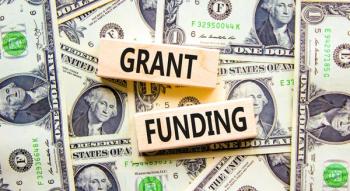
Is your practice giving it all away?
Failing to charge, or not charging appropriately, will put you and your practice in the poor house.
More veterinary practices fall into the "neglected income" group than any other. The sad fact is that many veterinarians look at sitting down to manage their own practices as if it were a sentence to hard labor. As a result, their practices may suffer due to income lost through poor pricing practices.
The situation is more common than you may think. In many cases, a practice's fees may need to be increased. But since some fees are more sensitive than others, adjusting them must be done with both eyes set on client perceptions of value. This can be accomplished through strategic pricing and use of a proven computer-based assessment program.
This was the case with what I'll call, On-the-house Animal Hospital (OAH). The three doctors at OAH needed help developing a plan for the future, and they asked us to analyze their practice revenues to discover how they might improve their profitability, market share and staff efficiency and develop a workable exit strategy.
We found that their fees, like those at so many other practices, just did not represent the level of patient care and client services they were giving their community. The red flag that their fee structure was out of line was their average charge per doctor transaction. In well-managed practices, the minimum average doctor transaction fee should be 3.5 times the examination fee.
This hospital's examination fee was appropriately priced for their community's economics at $45.40, so their desired and appropriate transaction fee should have fallen between $136 and $159. However, they averaged only $117 per transaction. For this three-doctor hospital with around 14,000 transactions each year, this amounted to a minimum loss of $266,000 annually. As about 80 percent of this incremental income would fall to the bottom line, we were looking to add well over $200,000 in pretax profits here.
With OAH we used competitive pricing (pricing fees at or slightly higher than competitors' fees) only for products and services for which clients price-shop, such as vaccinations. To be competitive, a price has to be visible. Charging separately for vaccinations and exams accomplishes this while also providing the opportunity to demonstrate the value of the physical health exam.
Using preprinted medical history questionnaires and sending home formal health report cards also reinforces the value of regular exams and can help identify health problems routinely missed without a good medical history. Here, OAH demonstrated its high level of care and reinforced its client education programs.
This hospital already billed separately for exams and vaccinations but charged only $39 for an exam when vaccinations were given rather than the full comprehensive exam fee of $45.40. Ideally, there should be no difference in price for an exam whether or not vaccinations are given. The exam is the same with or without the vaccination, and you should never discount your time and knowledge.
At OAH, we successfully increased the price for exams with vaccinations to $42.40 and advanced to the full fee of $45.40 six months later. Based on the results of a community fee survey, the hospital's vaccinations were priced competitively. We decided to maintain vaccination fees at their current levels.
Value-perception pricing was used for services to which clients ascribe tangible and intangible value. We have identified these perceptions over two decades of client surveys. Our computer programs now integrate these values with the local demographics and set their fees accordingly.
The perceived value of services is higher when combined with intangible qualities such as specialized medical knowledge, a friendly, helpful staff and the ability to speak with clients in a language they understand. Value-based services include most laboratory, radiology, hospitalization and non-elective surgeries. Your fees for value-based services can be greater than those at other practices in your community as long as your clients believe they are getting a better value at your practice than they would at the practice down the street.
Using our proprietary demographic fee programs, we determined that OAH's fees for laboratory, imaging and diagnostic services, hospitalization and treatments, anesthesia, non-elective surgeries and dentistry were significantly lower than was expected and inappropriate. The hospital increased these value-based fees to be in line with their $45.40 exam fee.
That left only pharmaceutical fees. For this we used cost-based pricing, which adds a markup to the cost of a product to determine its selling price. Here we needed a dispensing fee and a minimum prescription fee.
In companion-animal practices, an average markup of 125 to 150 percent is added to the cost of the medicine along with a dispensing fee of $15 to $25, depending on geographic location. Drugs with low turnover rates (less than eight to 10 times per year) typically have a 200 to 250 percent markup to cover the additional carrying cost. The total price is then compared to a minimum prescription fee, and the client is billed the higher of the two.
OAH's standard markup on dispensed medication had remained unchanged for four years and averaged only 100 percent. We increased it to 150 percent and also raised their minimum prescription fee and dispensing fee to $18.40 with the intent to implement a minimum prescription fee of $26.40 in six months. While the hospital staff anticipated a tsunami of client rejections, actual client reaction to the fee increase was insignificant.
Your clients' perception of value is certainly affected by fees, but giving away a medical service sends a direct message that the service has no value. You should not provide medical services you get nothing for. Giving away services is very costly to your practice, but pricing strategies are only part of the fee issue. You can spend days or weeks creating the perfect fee structure, but unless you invoice your clients for all services provided, your efforts are wasted.
For example, many practices fail to charge for services such as medical progress exams, skin scraping, pre-anesthetic sedation, induction, monitoring and in-patient exams and injections. Giving away one in-patient exam ($45.40) and one medical progress exam ($36.30) per day for a year amounts to about $25,000 in lost revenue.
Most veterinarians still undercharge for too many of their services, under-value their time and struggle with low profits. While increasing prices across the board without considering clients' perceptions of value can be disastrous, judicious and strategic increases can improve client perception of value while also benefitting your practice.
Increasing fees by an overall average of just 10 percent typically increases a business's bottom line profit by 35 to 40 percent. Adding a 10 percent reduction in overhead also typically increases the profit by 40 to 45 percent.
You can use intelligent, computer-based knowledge systems to be properly compensated for your time, knowledge, and experience capping your career with an enjoyable retirement. Or, you can wander, unadvised, joining most of America in having to increasingly lean on our government for your basic needs. The choice is yours.
Dr. Snyder, a well-known consultant, publishes Veterinary Productivity, a newsletter for practice productivity. He can be reached at 112 Harmon Cove Towers Secaucus, NJ 07094; (800) 292-7995;
Newsletter
From exam room tips to practice management insights, get trusted veterinary news delivered straight to your inbox—subscribe to dvm360.






